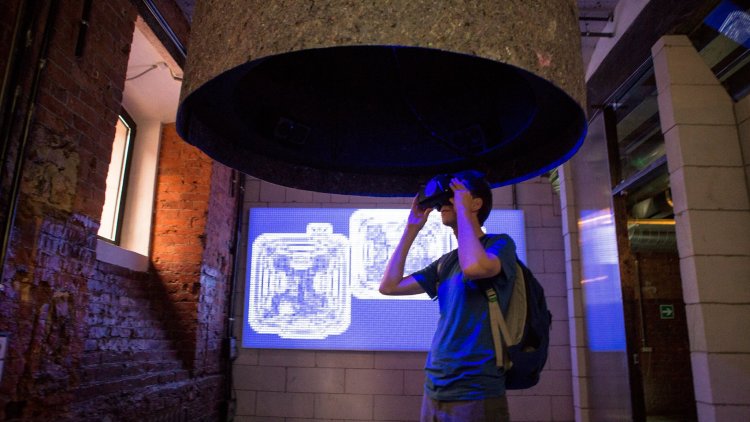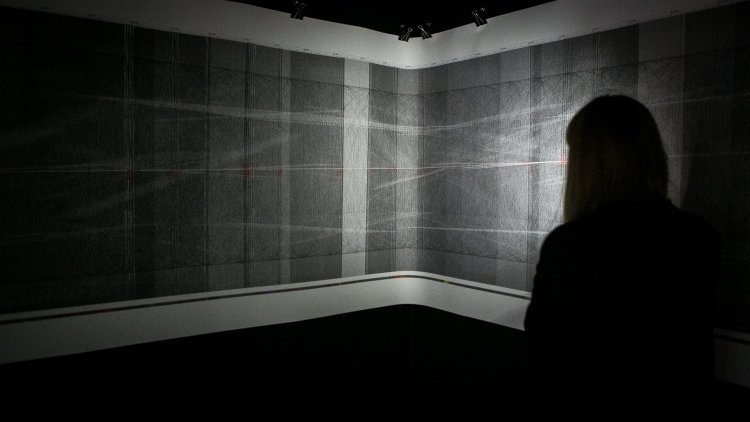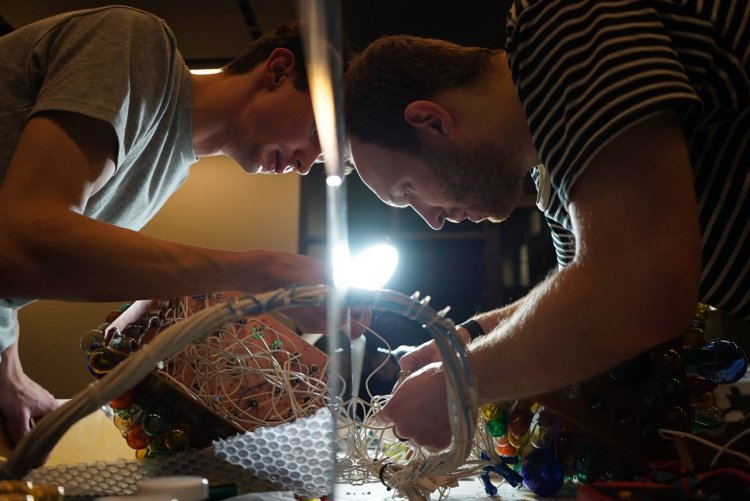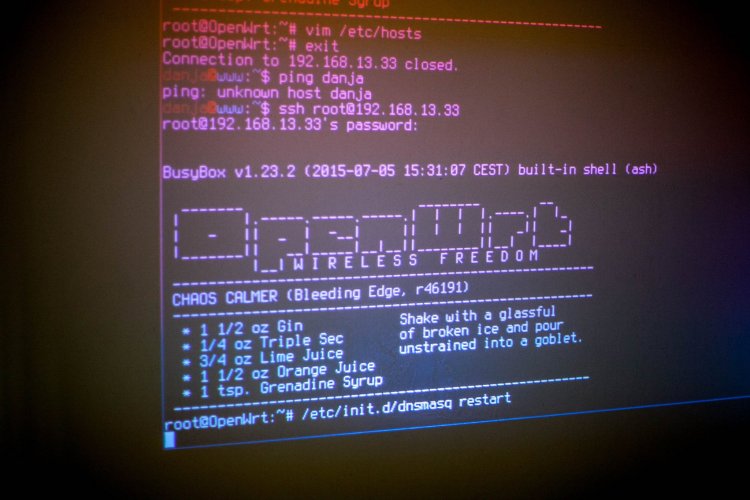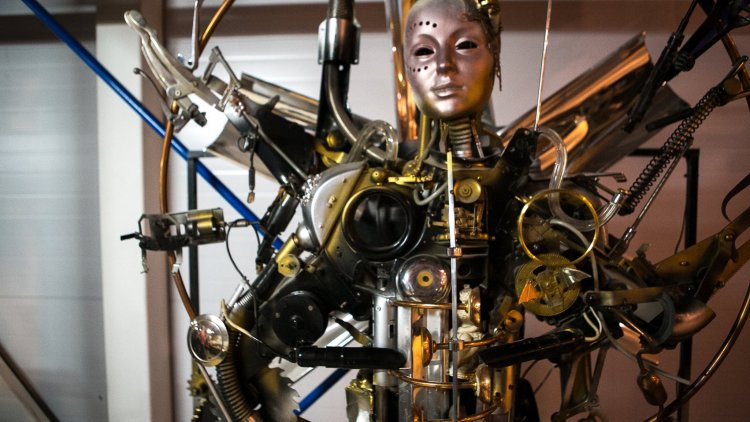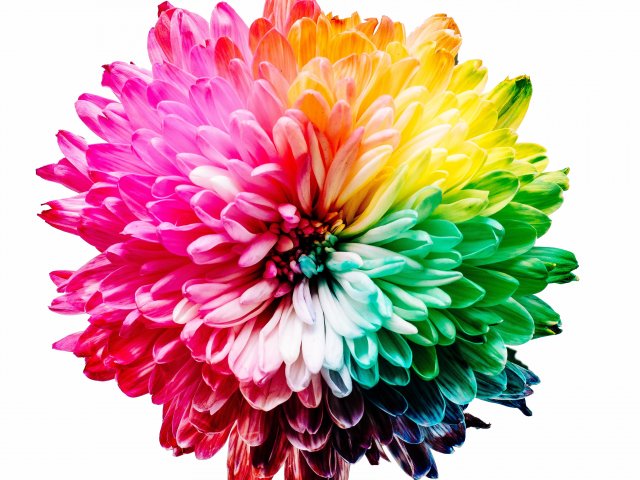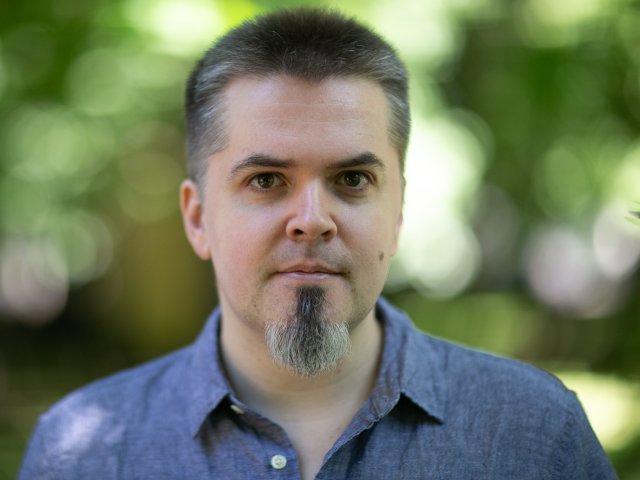Science Art is a branch of modern art, in which the artist uses scientific knowledge rather than paints and brushes. We have discussed the synthesis of science and art with Natalia Vadimovna Fuchs, head of Methodology Center for Media Art, curator and researcher of new media.
– A lot people talk about the popularization of science these days. In the context of Science Art, is it art that pushes its boundaries by using scientific achievements for expressive purposes, or does science seek to use art as a tool for its visualization and popularization?
In fact, art and science have been developing together in parallel for a long time. And their interpenetration had been an absolutely natural process for a very long time, but at a certain period these activities split up. And society began to think that these two fields had different foundations. Although, in fact, the nature of both of them is experimental, and the goal they share is to explore the world and discover new things. I think that things that are happening with art and science, and among other things, the increasing focus on interdisciplinary practices, including Art & Science, represent a recovery of long-held perceptions. We just drifted away from that canon for a while. And going back to the roots is very important, because our idea of the future is connected to interdisciplinarity. So, art and science are allies. And this is a very important phenomenon of modern reality, which allows people to learn a lot of skills, to master different types of thinking, and to put it all together into a big picture.
– German philosopher Oliver Grau studied the historical relationship between science, technology, and art. At what point did their separation occur, so that we moved away from interdisciplinarity?
If we take a look at the history of art and the history of science and technology, we can see that there were many practical activities combining art, science, and technology during the early period, the Middle Ages, and the Renaissance. The period from the Age of Enlightenment (eighteenth to nineteenth century) to the end of the nineteenth century became the period that separated art and science in the context of a whole paradigm and perspective. There were certain reasons that contributed to this division. Not only economic, but social ones as well. Along with the development of scientific and technological progress in the late nineteenth and early twentieth centuries, we began to return to the Renaissance culture; at that point we began to realize that the universality of knowledge, humanity and methods would help us achieve a more expansive view of the future and reality. It is likely that history will have more periods when these views are shared. We are observing a spiral development.
I am glad that today we have reached a point where we can forget about the division between technicians and humanitarians. The modern principles of appropriation of knowledge are related to the accessibility of information and to experimental approaches, which are also common to artists who work with scientific contexts and technologies. Media art is one of the branches within the complex of contemporary arts, and science art is a genre of media art, and most of expert artists in contemporary technologies work in this field. These people have clear aesthetic ideas about art and culture, yet they produce a cultural product, completely understanding the details and nuances of technological production.
STAIN on the “Laboratory Earth” exhibition
– Media artists have been called the “antennae of humanity” because they serve as mediators between science and art. Who can become a media artist: a scientist or an artist?
This is a very good question; we discuss it a lot at our programs at the Center of Professional Excellence in Media Arts. This center was opened by the Directorate of educational programs in culture and art of the Department of Culture of the Moscow City in order to create an educational platform that will provide continuing education in media arts. The main motivation for someone who wants to become a media art specialist, a media artist, is to understand the basis of interdisciplinarity, which is associated with the simultaneous study of a huge number of disciplines; as well as with gaining practical skills related to different technologies, but also with understanding different ways of thinking associated with a certain technological process, because it is related to conceptual goal-setting: when a person is engaged in virtual reality technologies, they keep a set of problems in their head, which they deal with, and a person who is engaged in artificial intelligence technologies will have a slightly different set of problems prioritized. However, if a certain technology is combined with an artistic part, and the artist begins to use artificial intelligence or virtual reality, then it is important to understand that in order to create a high-quality artistic statement on the subject, it won't be enough to simply imagine the works that have been created using this technology; it is also necessary to be familiar with its history, social aspects and the ethical side of it. So, the greatest works in media art are created when artists have the opportunity to transmit a critical perspective on innovation through their works.
ARTSAT_ Art and Satellite Project
– Some say that science is about reason and art is about emotion. So, does Science Art connect emotion and reason?
Media artists are the complete rationalists in the artistic world. They are exactly those people who combine and connect different ways of perceiving the world. Naturally, the emotional expression is an important component to reach the viewer and draw them into the idea that the artist wants to convey with their work or the curator with their exhibition, when choosing the composition of artists or works for their exhibition. But nevertheless, I think it would be quite difficult to work in media art without a rational approach.
If we talk about the ethics of using certain technologies, here's an example. We often talk about ecology: in the context of technology use, we have to think about problems related to ecology. We know perfectly well that if neural networks are used in art, they use a lot of energy to process digital data, which is actually a consumption of our planet's resources, and it also has to be considered critically. And the ideal situation is when media artists approach the creation of a work from a rational and critical position. In this sense, we can say that Art & Science, or media art as a more general field, is a very balanced and harmonious combination of both emotional contexts and a rational view on our reality.
– There are humanities sciences, too. Is it possible to visualize this kind of knowledge?
Of course, it is possible, because we can use all kinds of technologies, even those used in science. Sometimes, when we use technologies that were previously used to process knowledge or create a piece of art, the purpose of these technologies changes. We often get an opportunity to see something that we could not see before. It's great if a person thinks about it, but a media artist plays the role of a mediator and conductor, who helps process such information and data. And it happens in very different formats. For example, in the works of virtual art. There is a huge variety of technologies that help us work with the visualization of data.
Dmitriy Morozov and Ilnur Mustafin are working on the Crystal installation
– Is it true that projects are often arranged in a way so that artists seek to immerse the viewer “inside”? For example, Sonya Chillary's interactive performance, in which the performer and the artist are connected by sensors to feel the impulses.
I can draw parallels with my own curatorial and artistic practice, as well as with the practices of other authors – science is inspiring. We often see discoveries that begin to encourage and interest us: we want to look deeper and approach the use of a certain technology in a creative way; yet we know a lot of examples when artists who have basic education in a certain field of science can observe an external process and treat it creatively, and also participate in certain experiments. Unfortunately, there are very few events of this kind in Russia, when, for example, we could observe the work of a scientific group and have artists integrated there in order to create a piece of art or just take part in experiments. The reason for this is certain legal provisions and it is simply not always possible. Other countries do have such practices. I often give an example of Australia, where you can get a double degree at a number of universities. For example, in synthetic biology and artistic practices related to media art. It's not just about creating a work of art. It is also about artists being equally integrated into experimental research groups and contributing to these processes.
One of the most striking works is a neural synthesizer created by Australian artist Guy Ben-Ari, who worked at the University of Perth. Before he had the opportunity to create his artwork, he was a participant in an experiment to transform a certain type of cells into neural ones. He provided his biological material for this experiment, and later a work of art – the CellF installation – was created; it functions thanks to the activity of the artist's neurons. Thanks to such projects, we have events that contribute to the development of medicine on the one hand, and music and sound art on the other hand, for example. It is amazing when such an open perspective emerges. I hope that the institutional world will become more open to such initiatives in the future.
– Which areas of science are most oriented toward such interaction? Can we visualize everything?
I think we can. If we're talking about neural networks, how do you visualize machine learning? It's about numbers, computer analysis, and things that happen inside the machine. We can get certain images, we can get analysis data in the form of graphic symbols, but that doesn't fully create the aesthetics of such works. That's why we need an artistic and curatorial view of the technological context: it makes the interaction between a person and scientific knowledge more complete.
The human imagination is limitless. It is a good thing that today we have such a creative opportunity to relate to any field of science and technology.
Danja Vasiliev's web art workshop
– There are a lot of projects in this field abroad right now, but in Russia they are just at the beginning. Do our media artists have people to learn from?
Of course, they do. In Russia, there is a whole school associated with engineering experimental practices of the 20th century. My generation, which was born in the 80s, still remember the time when their fathers assembled various radio devices at home. Probably almost every student in my class could say that their dad was an engineer. It was a family tradition. I got my first liberal arts degree at a technical university exactly because it was clear and comfortable for me to stay within the technological context. In my opinion, Russia is unique in this sense. We have an amazing Soviet legacy that we have not fully understood. We only began to return to this heritage at the beginning of the 21st century when media art became widespread in the Russian society. Let's not forget the inventions that have a huge influence and impact on us. These things were created as a result of engineering practices and experimental art. This is the legacy that we can be proud of.
For example, in the 1960s, Prometheus, a design bureau at Kazan Aviation Institute directed by Bulat Galeev, represented a unique experimental space where artists and engineers worked to create pieces of art with light music and audiovisual art. We used to think that such practices come from abroad, but we have our own origins. And I am glad that today we have reached a point when we have realized it and are still aware of it; and we can translate ourselves into the world, into the global arena, not from the position of students, but from the position of professionals who can pass on their own skills. We also have a lot of artists who work with different media and receive a lot of prizes at international competitions. I could list many of them.
Unfortunately, this year there were no Russian winners at one of the major media art competitions, Ars Electronica, but in previous yearsб many Russian authors were highly praised. Media artist Dmitriy Morozov and theorist Dmitriy Bulatov were among them. In this sense, we can feel confident and rely on our own history, developing and moving forward.
– Do media artists always turn to the new discoveries or retrospective view is also present?
In one of his works Oliver Grau describes the frescos of Pompeii and cites them as one example of virtual art. Our idea of it has to do with computers and virtual reality helmets, but many years ago there were no such possibilities, although there was the same motivation for humans to immerse themselves inside a work of art, in other words – the need for immersion. And by the example of the Pompeii frescoes, we can say that the panoramic frescoes had immersive qualities. The immersion itself was simply achieved in slightly different ways than in the virtual art of the twenty-first century. This is one example of how media archaeologists work: we discover something that seems new to us from a technological point of view in a contemporary situation and we try to trace the history of that invention from the past. It's a very interesting and fascinating activity. And this practice allows us to discover a lot of new things for children's thinking and immediately form that very interdisciplinary focus.
Open collections of Polytechnic Museum in Moscow
– Is Science Art recognized by the science community and the audience?
Since the active computerization in the U.S. and Europe began much earlier than in our country, in Russia we are in a different position compared to foreign countries. And the artists who started working with computer technology in the 1960s worked mostly abroad. They interacted with teams of scientists and technology developers for a much longer period of time. In Russia, this situation is related to the current period, but to a limited extent, which does not reflect the global situation and the global demand quite correctly. We often encounter a situation when we have a large number of spaces filled with technological instruments, but we do not know what to do with it and what to represent with all these innovations. For the last 50 years, the global community has been busy making connections between the artistic and scientific communities. Every major technology university abroad now has an arts department. I mean, Harvard, MIT, any major university in the UK or Germany.
I think we should pay attention to this when forming a perspective and a view of how to construct educational, economic, and social processes. Only this kind of balanced synthesis will help us get a reasonable view of both our present and our future.
Photos provided by the speaker

